OSCAR DE LA RENTA ON IKAT FABRIC
UZBEK NATIONAL MOTIFS ON THE WORLD CATWALKWAYS
Khan-atlas, adras, suzane, bakhmal, ikat won hearts and settled in the wardrobes of not only Uzbek fashionistas, but also world fashionistas.
Perhaps the most popular in the fashion industry have gained traditional Uzbek fabrics made using ikat technology. The word “ikat” itself came from Indonesia, and comes from the verb “mengikat”, which means “to bind, to intertwine”.
Traditional ikat is the most complicated and handmade weaving technique: threads are tied together in bunches and then gradually dyed in certain colors. Ikat is characteristic not only for Uzbekistan, however, it is the Uzbek print that differs in that the pattern is applied only to the warp threads, while the weft – the transverse threads of the fabric – remains flat. Thus, the fabric acquires a beautiful and complex color tint. Among craftsmen in Uzbekistan, this technique is called abrband, which means “tied cloud,” but avid fashion designers even in our country refer to printing as ikat.
Fabrics made using the ikat technique are very different and are excellent for sewing clothing, as well as for finishing accessories, utensils and interior items. It was the world’s interior designers who first appreciated another, no less charming, type of national decoration, suzanne. Panels embroidered with a special technique confidently migrated from the ancient homes of the Central Asian rich to the collection of interior fashion trends and, as a result, homes of modern connoisseurs of comfort and style.
OSCAR DE LA RENTA AS THE DISCOVERER OF IKAT FOR THE GLOBAL FASHION COMMUNITY
At the end of the 20th century, couturiers with world names paid a lot of attention to ikat. And the first among those who brought ikat to the podium was the founder of the fashion house Oscar de la Renta, who passed away. Thanks to its spring-summer 2005 collection, this ornament entered the elite and became a fashion trend for clothing and interiors. Of the 59 bows presented on the podium, 6 included clothing and accessories that showcased ikat in all its brilliance, vivacity and ethnicity.

In the 2008 collection, de la Renta again chose a multicolored print as a leitmotif, demonstrating completely different facets: restrained, refined and sophisticated.

Oscar de la Renta also used ikat in the fall 2013 collection.
Without exaggeration, one can say about the fashion designer’s love for ikat and our love for Oscar for its popularization.

IKAT FROM THE EARLY 2000S TO THE PRESENT
The fashion house Balenciaga in the fall 2007 collection supported the idea and secured the status of the main trend of the 2000s for ikat.

A bright Uzbek print appeared simultaneously and very effectively in the Dries Van Noten spring – summer 2010 collections.

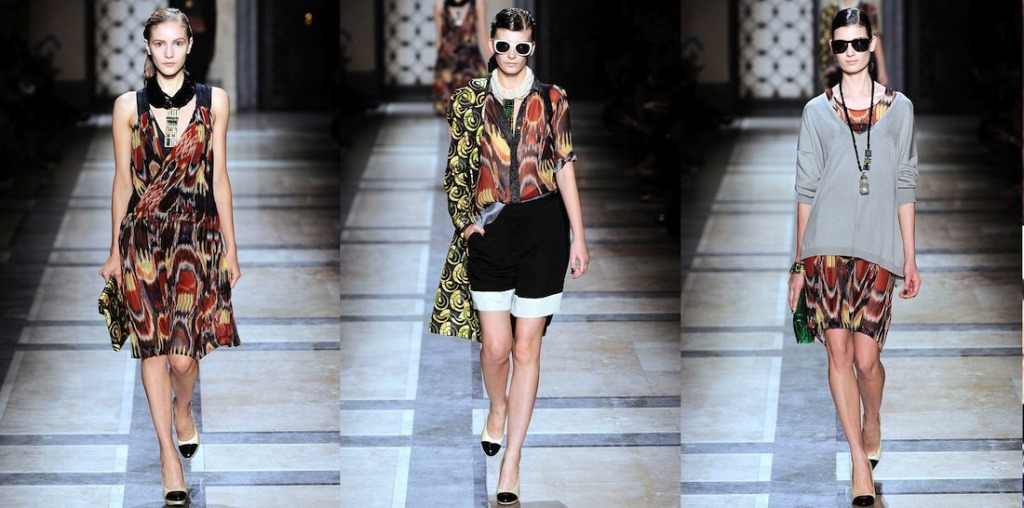
And of course Gucci from the same season, which is quite natural, given the influence of the aforementioned Balenciaga brand, which is part of the Gucci Group.
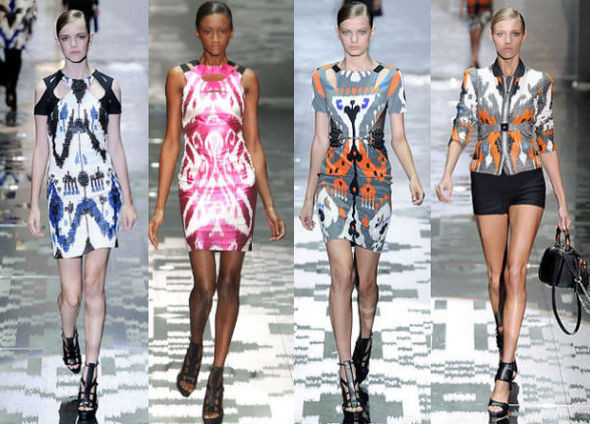
The L.A.M.B. brand, created in 2003 by singer and actress Gwen Stefani, also did not overlook ikat in the spring 2011 collection.
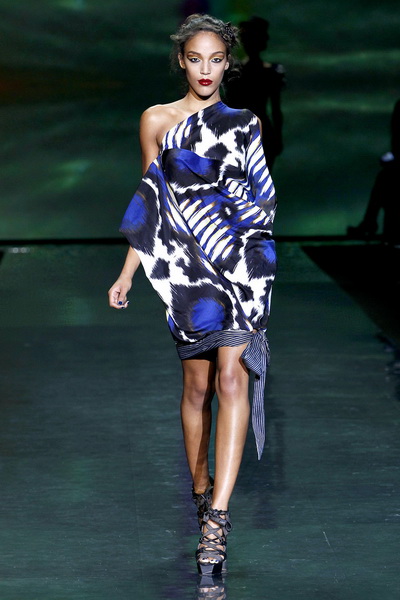
Naeem Khan, an American fashionable women’s clothing brand and Michelle Obama’s favorite fashion designer, presented several sophisticated and very elegant ikat looks in the fall 2011 collection.

Proenza Schouler, a New York-based women’s clothing and accessories fashion brand, has always been distinguished by high craftsmanship and attention to detail. The fall 2011 collection was no exception when the founders of the brand used ikat to create images for the so-called street fashion. The insolence, underlined by a bright print, made the collection one of the most popular of the season.
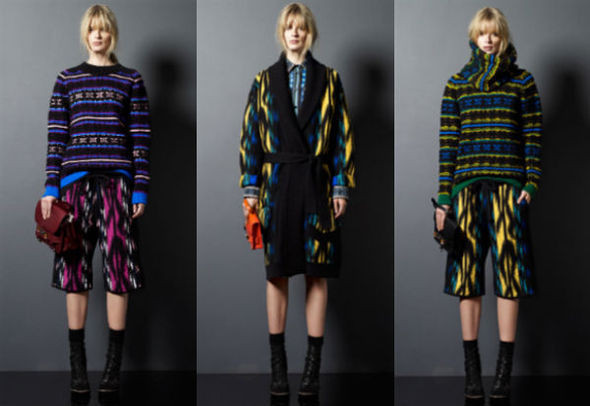
Ikat and men’s fashion did not turn around. Monitaly shirts and shorts are quickly winning the hearts of a strong half of fashionistas.
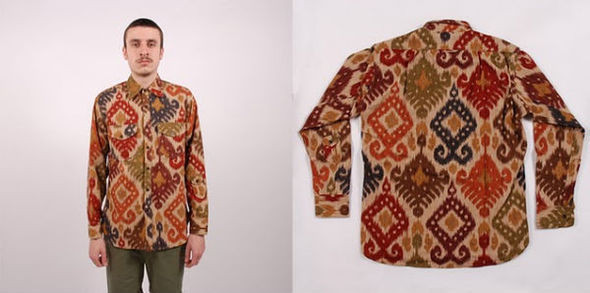
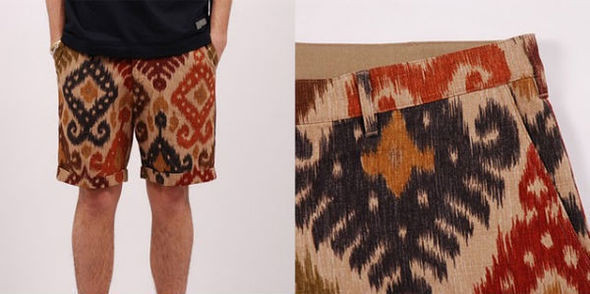
Emilio Pucci actively used ikat in the pre-fall 2014 collection. It is worth saying that the brand is known for its love of brilliant images and therefore the use of ikat has become a regularity rather than a surprise.

The eccentric Roberto Cavalli did not go through the ikat. Despite the unconditional love of fashion designers for animal prints, ikat took its rightful place in the 2014 cruise collection.
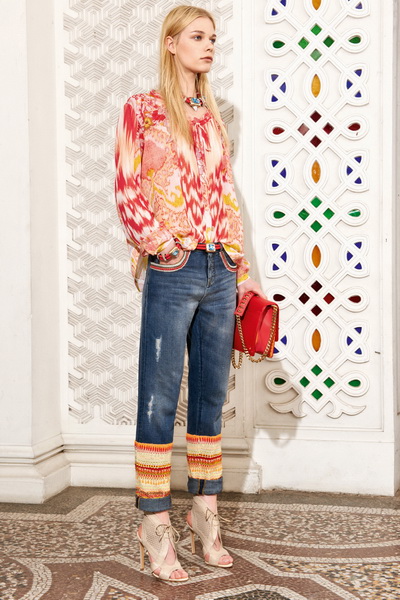
It became completely clear that with the light hand of the Oscar de la Renta fashion house, ikat firmly secured its right to be present in designer collections. And the rebellious brand Isabel Marant with the autumn – winter 2015-2016 collection is a confirmation of this.

It is logical that from the global catwalks our national footprint migrates to the collection of popular mass market brands. Zara, HM, Forever 21 quickly picked up the idea and contributed to the popularization of print among fashionable young people around the world.
